Shot, Jailed, Exiled - But Nothing Broke These Unsung Women Freedom Fighters
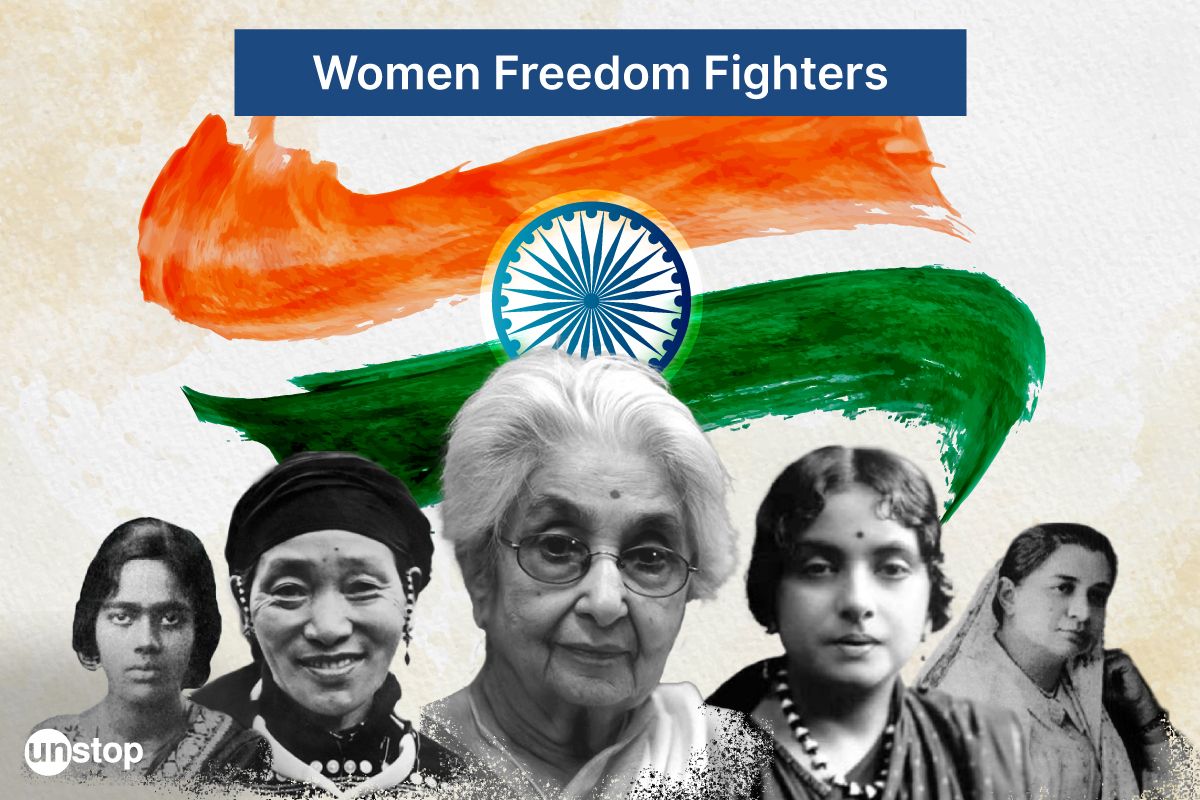
India's struggle for freedom from British rule was a collaborative effort that involved the dedication and sacrifice of numerous individuals, many of whom were women. While prominent men and women like Mahatma Gandhi, Annie Besant, Vijaylakshmi Pandit, Jawaharlal Nehru, Sarojini Naidu, Subhash Chandra Bose are widely recognized, countless unsung women freedom fighters played pivotal roles in shaping the course of India's fight for independence.
What distinguishes them from others is that in an era that considered females subordinate, these women defied societal norms, fought with valor, and contributed significantly to the freedom movement.
Free yourself from self-doubt! Book a free 1-on-1 session with our mentors to scale up your career
5 Unsung Heroines Who Deserve Our Salute
1. Sucheta Kriplalani
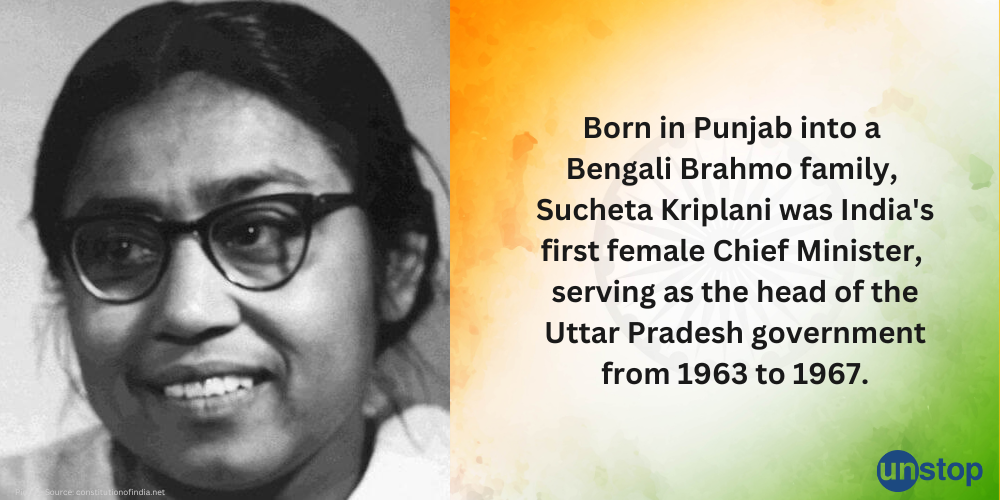
- Academically bright, Sucheta completed her higher studies at Delhi’s Indraprastha College, followed by St. Stephen’s College. She later became a professor of Constitutional History at Banaras Hindu University.
- Her father, a medical officer under British Government, instilled patriotism in Sucheta since her childhood.
- During the Quit India Movement in 1942, Sucheta operated from the forefront and was arrested by the British.
- She actively worked for women's upliftment and was one of the few women who were part of the Constituent Assembly of India.
- On 14 August 1947, she sang Vande Mataram in the Independence Session of the Constituent Assembly before Nehru’s famous ‘Tryst with Destiny’ speech.
- Shy yet stubborn in her ideas, Sucheta Kriplani is fondly remembered for her honesty, intelligence, and hard work.
2. Kamaladevi Chattopadhyay

- Kamaladevi was a social reformer and a strong advocate of Indian cultural and artistic autonomy.
- Widowed two years after being married at the age of 14, Kamaladevi went ahead to pursue her studies and joined the prestigious Queen Mary’s College in Madras (now Chennai) for higher studies.
- At a time when widow remarriage was considered taboo, she rebelled against society and married Harindranath Chattopadhyay (Sarojini Naidu’s brother).
- A strong feminist, she even convinced Gandhi to give women equal opportunity to be at the forefront of the Dandi March.
- In the 1940s, when the World War broke out, she began a world tour to make other countries aware of India’s condition and garner their support for the country’s freedom.
- Her work for the upliftment of society and for giving impetus to Indian art and culture continued post-independence despite opposition from various power centers. Her immense contribution to the handloom industry fetched her the nickname ‘Hatkargha Maa’.
3. Bhikaji Cama
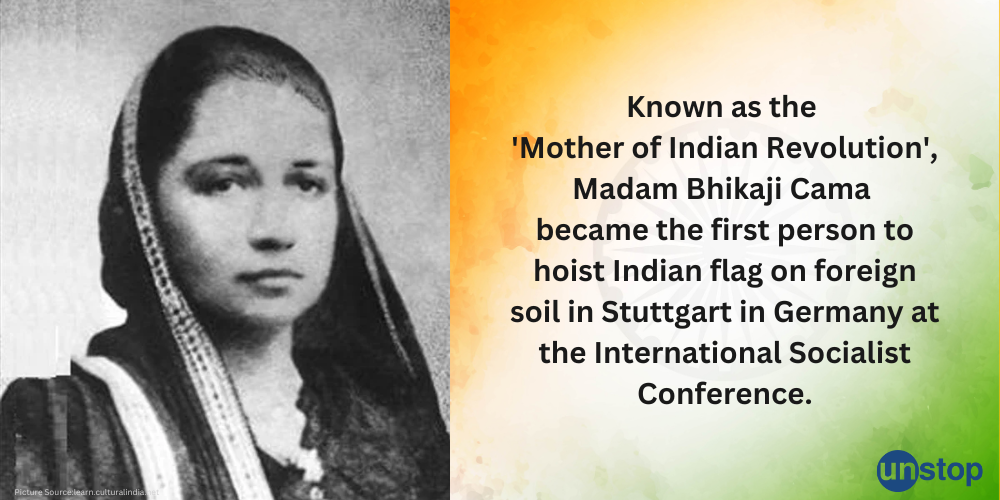
- Bhikaiji Rustom Cama was one of the bravest women freedom fighters of India.
- She was born into an affluent Parsi Zoroastrian family but ditched luxury to participate in India’s freedom struggle.
- After marriage, Bhikhaiji spent most of her time in philanthropic activities and social work. During the 1896 famine, Bhikhaiji worked at Grant Medical College in Bombay to provide care for the afflicted. She subsequently contracted the plague herself but survived.
- Bhikaji Cama met Dadabhai Naoroji in London and plunged into the freedom movement after being inspired by his ideology. There she met other nationalists like Shyamji Varma, Lala Hardayal and became an active member of the Indian revolutionary movement.
- When the popular nationalist VD Savarkar wrote his book, First War of Indian Independence, it was Bhikaji who smuggled the book into India as the British Government outlawed it. The book later became the bible for Indian revolutionaries.
- She began the ‘Free India Society’ and wrote the journal ‘Bande Mataram’ to spread her revolutionary thought.
- Bhikaji strongly advocated gender equality and women's suffrage, which is reflected in her strong speeches.
4. Lakshmi Sehgal
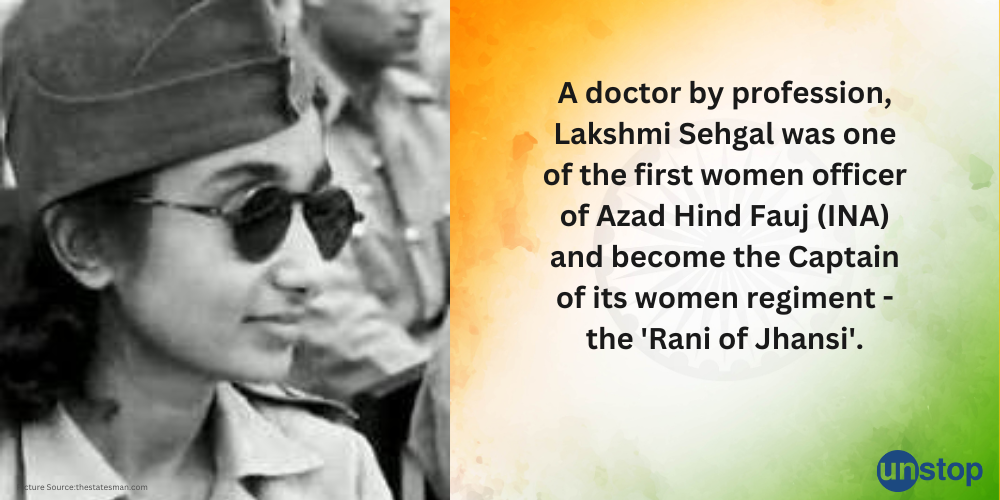
- Born as Lakshmi Swaminathan in Madras, she was a highly qualified woman and a brave freedom fighter. She was the elder sister of Mrinalini Sarabhai, the wife of Indian physicist Vikram Sarabhai.
- Lakshmi studied at Queen Mary's College and received an MBBS degree from Madras Medical College in 1938. She then did her diploma in gynecology and obstetrics.
- After her failed marriage, Lakshmi shifted to Singapore, a hub for several Indian nationalists, and initiated her medical practice for the Indian diaspora.
- When she heard that Subhash Chandra Bose was keen to draft women into Azad Hind Fauj or Indian National Army, Lakshmi joined hands with him to attack the British in India and free the country. She helped train other women for the ‘Jhansi ki Rani’ regiment.
- Lakshmi was arrested by the British in 1945 and taken prisoner in Burma until 1946.
- Post-independence, she resumed her medical practice with a focus on refugees and marginalized sections. She also became a strong voice for women's issues, workers’ rights, etc.
5. Matangini Hazra
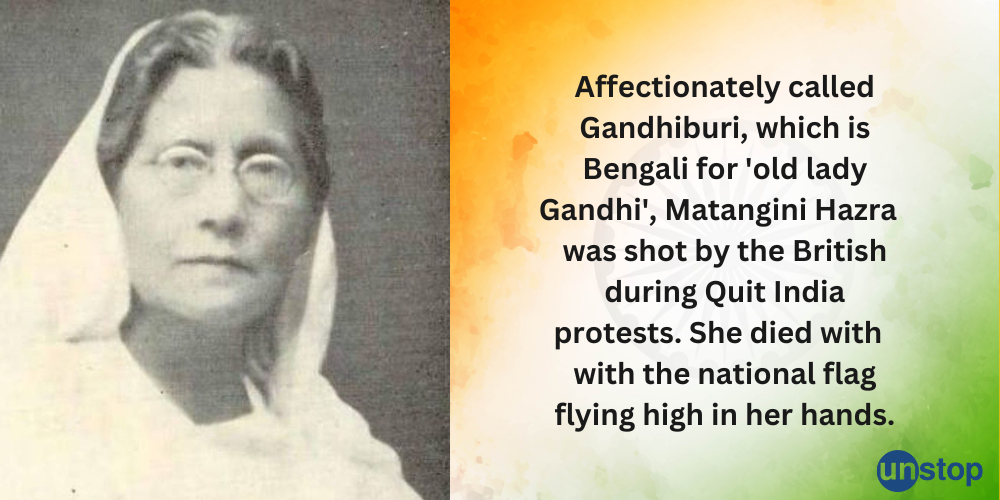
- Matangini Hazra was born in a poverty-stricken village in Midnapore, India. She received no formal education, married as a child, and was widowed at 18.
- Inspired by Gandhi, she decided to dedicate her life to fighting for India’s freedom.
- In 1932, Matangini joined the Civil Disobedience Movement and was arrested for violating the Salt Act.
- In 1942 during the Quit India Movement, Matangini led 6,000 protesters to the Tamluk police station and court. She was 72 years at that time!
- The group was stopped by British Indian Police, citing section 144 of IPC. As Matangini stepped forward to ask the police not to shoot at the protestors, she was instantly shot three times.
- Despite being critically injured, Mantangini kept advancing, leaving all volunteers behind, and died chanting Vande Mataram.
- Her sacrifice was viewed as a national symbol of the Indian Independence.
Other lesser-known women freedom fighters of the era were Pritilata Waddedar, Aruna Asaf Ali, Rajkumari Gupta, Rani Gaidinliu, Kanaklata Barua, and the list goes on.
As we celebrate another Independence Day on 15th August, let us remember the contribution of the great Indian freedom fighters- our unsung heroes and heroines. Without their sacrifices and vision, India would have never seen the British flag come down. Jai Hind!
Suggested Reads:
- Vidhu Vinod Chopra`s `12th Fail` Will Resonate With UPSC Aspirants. Here’s Why
- UPSC Success Story: From Earning INR 10/Day As A Laborer To Becoming The First Civil Servant In The Family
- Meet IAS Surabhi: Left TCS; Couldn't Speak English; Cleared UPSC, IES, ISRO, BARC
- From ‘Reel’ To Real UPSC Success: IITian Gagan Meena Shines As An IAS Officer; Cracks UPSC Twice
Login to continue reading
And access exclusive content, personalized recommendations, and career-boosting opportunities.















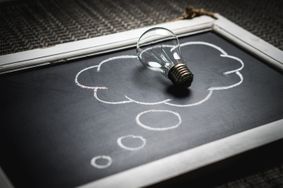
Comments
Add comment